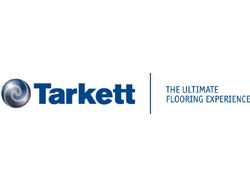Tarkett Joins in Panel Discussion on PVC at C2C Products Symposium
Solon, OH, December 17, 2015—In November, key representatives from Tarkett participated in the C2C Products Symposium and Innovation Celebration at The Conrad in New York City, New York.
On the first day of the symposium, Tarkett participated in a presentation called Closing the Loop: An examination of the positive impact of using C2C principles in business.
The next day, Tarkett participated in a panel discussion on PVC, an affordable and commonly used building material currently on the banned list in the Cradle to Cradle certification. Titled, “Let’s Talk About PVC,” the session was moderated by Stacy Glass, VP of Built Environment with the C2C Products Innovation Institute and included viewpoints from leading industry experts, including Dr. Michael Braungart, founder of EPEA International and co-founder of Cradle to Cradle; Bill Walsh, founder & executive director, Healthy Building Network; Wes Sullens, manager, Green Building Policy & Advocacy at StopWaste; and Anne-Christine Ayed, EVP Research, Innovation and Environment at Tarkett.
The panel discussed how PVC has evolved, opened a debate on the material’s future in built environment applications, and considered the improvements being made to address long standing environmental and human concerns. Although PVC has been highly criticized for its production, use and post-use handling during the past 30 years, the panel reviewed how PVC manufactured and recycled in a responsible manner is preferred to that coming from unknown sources and manufactured without proper supply chain controls in place.
In Dr. Braungart’s position proposal, which is available on the EPEA website, he explains, “PVC is intricately linked to another industry and was originally developed as a way to manage chlorine, a by-product of the caustic soda industry using the chloralkali process. As long as the demand for caustic soda prevails, a transitional chlorine management solution is obviously needed. Against this background, we believe that it is preferable to sequester chlorine in PVC applications, such as pipes, window frames and flooring, with positively defined composition that can be managed after-use. Only those products for which a take back and recycling system can be established and properly managed come into question for this sequestration.”
“Tarkett’s approach to PVC flooring applies C2C principles and aligns with the concept of closed-loop circular design,” said Ayed. “Because we define good materials as safe for people and the environment, we work with our supply chain to create products with PVC resin made responsibly by suppliers who follow manufacturing best practices. We use it to make products with extremely low VOC emissions, using phthalate-free plasticizers and safe stabilizers, and finally, we recycle our products through the Tarkett ReStart recycling and reclamation program. This eliminates the concerns that stigmatize PVC products and we are proud of the progress that has been made.”
Related Topics:Tarkett
